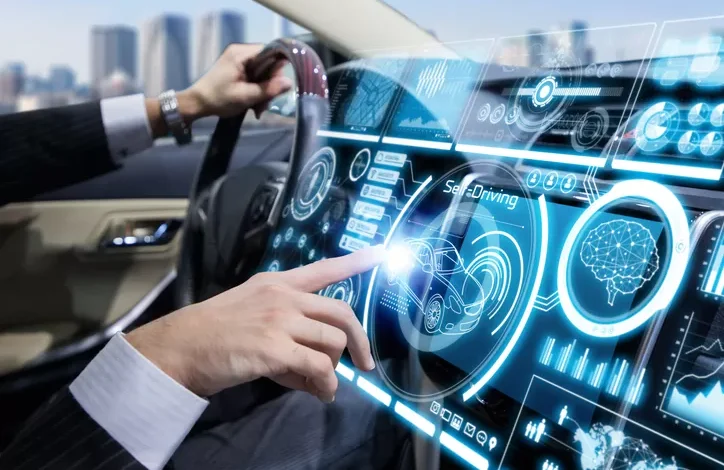The Hidden Danger Behind the Wheel: In-Vehicle Technology and Its Impact on Road Safety

In an era where technology infiltrates every aspect of our lives, the car dashboard has not been left untouched. The integration of in-vehicle technology, designed to make our drives more enjoyable and convenient, has a dark side – it’s becoming a leading contributor to distracted driving incidents. This article delves into the complex relationship between in-vehicle technology and car accidents, shedding light on a pressing issue that demands immediate attention.
Understanding Distracted Driving
Distracted driving is any activity that diverts attention from driving, encompassing visual (taking your eyes off the road), manual (taking your hands off the wheel), and cognitive (taking your mind off driving) distractions. Despite widespread awareness campaigns, distracted driving remains a significant problem. According to the National Highway Traffic Safety Administration (NHTSA), distracted driving claimed 3,142 lives in the United States in 2019 alone. These statistics highlight a disturbing trend: as in-vehicle technology becomes more sophisticated, the potential for distraction increases.
The Evolution of In-Vehicle Technology
From the first car radios to today’s advanced infotainment systems, in-vehicle technology has come a long way. Modern vehicles are equipped with GPS navigation, Bluetooth connectivity, voice commands, and touchscreens – all designed to keep us connected and entertained while on the move. However, the line between convenience and distraction is thin. The very technologies meant to assist us can, paradoxically, take our focus away from the road.
How In-Vehicle Technology Contributes to Distracted Driving
The impact of in-vehicle technology on distracted driving is multifaceted. Touchscreen interfaces, while intuitive, require drivers to look away from the road, leading to visual distraction. Voice-activated commands, intended to keep our hands on the wheel, can still divert our mental focus, resulting in cognitive distraction. Moreover, the temptation to use smartphones for texting or social media, often through car systems, introduces both manual and cognitive distractions.
A study by the AAA Foundation for Traffic Safety found that using a touchscreen or voice commands can mentally distract drivers for up to 27 seconds after interacting with the device – a significant period during which a vehicle, traveling at 25 mph, can cover the length of three football fields. This statistic starkly illustrates the hidden dangers of in-vehicle technology.
Real-life examples further underscore the risks. Numerous accidents have been directly linked to drivers being distracted by technology, from adjusting GPS settings to selecting music on streaming apps. These incidents serve as a grim reminder of the potential consequences of divided attention.
The Impact on Car Accidents
The proliferation of in-vehicle technology correlates with a rise in distracted driving accidents. Although comprehensive statistics that isolate the impact of this technology are challenging to compile, evidence suggests a significant relationship. For instance, the NHTSA reports a steady increase in distracted driving fatalities, coinciding with the widespread adoption of advanced in-vehicle systems.
In an effort to combat these trends, legal frameworks and regulations have evolved. Many states have enacted laws specifically addressing the use of technology while driving. However, enforcement remains a challenge, and the legal landscape is continually adapting to new technological advancements. For those seeking legal guidance on this matter, resources such as Joe I. Zaid Clear Lake, TX offer invaluable information and support.
Legal Framework and Regulations
In response to the growing threat posed by in-vehicle technology distractions, the legal system has been playing catch-up. Across the United States, laws and regulations targeting distracted driving have become more stringent. These range from complete bans on handheld device use while driving to specific restrictions on texting and the use of infotainment systems. Despite these efforts, the challenge of enforcing such laws in the face of rapidly advancing technology remains daunting. It’s a dynamic battleground, with lawmakers striving to protect public safety without stifling technological innovation.
Preventive Measures and Solutions
The fight against distracted driving requires a multifaceted approach, combining legal measures, public awareness, and technological solutions. Drivers can take proactive steps to minimize distractions, such as setting their destination on GPS before starting to drive, using do-not-disturb modes on smartphones, and committing to keeping their focus on the road.
On the technological front, developers are working on apps and devices designed to reduce in-vehicle distractions. Features like automatic blocking of incoming calls and texts while driving, or systems that limit the functionality of in-vehicle technology when the car is in motion, are becoming more common. Furthermore, car manufacturers are tasked with designing safer, more intuitive systems that minimize the need for drivers to take their eyes off the road or their hands off the wheel.
The Future of In-Vehicle Technology and Distracted Driving
As we look to the future, the role of in-vehicle technology in our lives is set to grow even more significant. With the advent of autonomous vehicles and further advancements in connectivity, the potential for distraction could either significantly decrease or evolve into new forms we have yet to fully understand. Experts predict that autonomous driving technology may eventually eliminate the need for driver intervention, thereby reducing the risk of distracted driving accidents. However, until such technologies are fully realized and widely adopted, the responsibility remains on drivers, manufacturers, and lawmakers to ensure that technology serves to enhance, rather than endanger, road safety.
Conclusion
The integration of in-vehicle technology has transformed the driving experience, offering unprecedented levels of convenience and connectivity. However, this evolution has also introduced new challenges in the form of distracted driving, a phenomenon with deadly consequences. As we navigate this changing landscape, it is crucial for all stakeholders to collaborate in promoting safer driving practices, supporting legal measures, and advancing technological solutions aimed at minimizing distractions. Together, we can pave the way for a future where technology and safety go hand in hand on the road.
FAQs
Q: What is the most common form of distracted driving?
A: Texting while driving is widely regarded as the most dangerous form of distracted driving, combining visual, manual, and cognitive distractions.
Q: Can in-vehicle technology be safe to use while driving?
A: Yes, if designed and used responsibly. Features like voice commands and heads-up displays can provide safer alternatives to manual and visual interactions with devices.
Q: Are there any apps designed to prevent distracted driving?
A: Yes, there are several apps available that help minimize distractions by blocking incoming calls and messages or sending automatic replies while you’re driving.
Resources
For those interested in learning more about distracted driving and how to prevent it, a wealth of resources is available online. Government websites, safety organizations, and legal experts offer comprehensive guides, statistics, and advice on navigating the challenges posed by in-vehicle technology. By staying informed and vigilant, drivers can contribute to making our roads safer for everyone.



